Starbucks: Takeaways From The 2017 Annual Meeting
Written by Nicholas McCullum on April 13, 2017
Starbucks (NASDAQ:SBUX) has had a very impressive run since its IPO in 1992. The stock has returned 18,325% during that time period, which has pummelled the S&P 500 (NYSEARCA:SPY) (along with every other index).
It is also a strong dividend stock. The company hiked its dividend by an eye-popping 25% in November, which was the sixth consecutive year of annual dividend increases since the company initiated the payout in 2010. This means Starbucks is more than halfway to being a Dividend Achiever, which are stocks with 10+ years of consecutive dividend increases. You can see the list of all 265 Dividend Achievers here.
Most investors are familiar with the old adage "Past performance is no guarantee of future results". This definitely applies to Starbucks (as well as all other stocks). Just because the company's performance since its IPO has been nothing short of spectacular does not mean strong returns must continue in the future.
Fortunately, its future looks bright. The company outlined its strategic plan to continue growth at its 25th annual shareholder meeting, which was held on March 22 in Seattle, Washington.
This article will discuss Starbucks' growth prospects, as outlined in its annual meeting, in detail.
The Strategic Agenda
In a press release accompanying the annual meeting, Starbucks made the following announcements:
- Changes to its management and corporate governance teams, including a new Chief Executive Officer (originally announced on December 1st) and three new additions to the board of directors
- The intention of significant expansions by fiscal year 2021, which includes more than 240,000 new jobs globally (68,000 in the U.S.) and more than 12,000 new locations globally (3,400 in the U.S.)
- An update on Starbucks Roasteries
- Renewed its guidance to focus on technology
- An update on international expansions
This article will discuss each of these bullets in detail below.
Corporate Governance Changes
Starbucks is currently executing on a number of corporate government changes.
Investors are likely familiar with the management change at the CEO level. Howard Schultz, the company's long-time leader, has left his role as CEO effective April 3, 2017. Schultz originally acquired Starbucks in 1987, when there were only 3 locations. He will continue to be involved with Starbucks as the company's executive chairman and will be leading its new Roastery efforts (more on that later).
Replacing Schultz is Kevin Johnson, who originally joined Starbucks as a member of its board of directors in 2009, before taking on an expanded role as president and chief operating officer in 2015. Johnson brings experience in the technology sector, including 16 years at Microsoft (NASDAQ:MSFT) and 5 years as the chief of Juniper Networks (NYSE:JNPR). With Starbucks being a leader in terms of serving its customers via technology, I view Johnson's background as a significant plus for this company.
You can read a brief interview with the company's new CEO here.
Starbucks also made changes in its boardroom. The annual meeting saw the company announce a few key additions to its board of directors, namely:
- Satya Nadella, the Chief Executive Officer of Microsoft
- Rosalind Brewer, the former CEO of Sam's Club (Wal-Mart's membership-only retail subsidiary)
- Jorgen Vig Knudstorp, the executive chairman and previous CEO of Lego
Each of these executives is highly renowned, particularly Nadella, and will likely be positive contributors to the company's future governance.
The Rollout of Starbucks Roasteries and Starbucks Mercato
Starbucks' identity lies as a premium brand. The company's products are not known to be cheap, yet consumers are happy to pay a higher price because of the positive ambience associated with its locations and the consistency of its service and beverage quality.
To that end, the company is rolling out even more premium locations, which are called Starbucks Roastery. Starbucks gave an update on this project at its 2017 shareholder meeting.
These locations will occupy the highest spot in its "product pyramid", and will offer consumers high-end coffee that sells in excess of $10 per cup.
The coffee is not the only thing customers will be paying for, though. Roastery locations are expected to be a premier meeting place for both business and social endeavors, and consumers are not expected to be purchasing their beverages "to go".
Starbucks' Roastery concept is quite unique, but I assign a high probability that the project is successful. A large reason why is the involvement of the company's long-time leader, Howard Schultz, who will be leading the Starbucks Roastery initiative in his new role as executive chairman. Schultz has a proven track record as the leader of the overall Starbucks business, and I view his involvement as a positive for Roastery.
Even once the project has scaled to capacity, the Roastery locations will be very rare. Currently, Starbucks' management has publicly communicated plans for only six locations across the globe, although this number will inevitably increase as time passes. You can see the six planned Roastery locations in the diagram below.
(Source: Starbucks Annual Meeting Presentation)
There is a lot of uncertainty around the potential of the Roastery franchise. For more information, I encourage investors to get a glimpse of the Starbucks Roastery project by visiting its website here.
Roastery is not the only area of the company's business where it is innovating. On April 11, it launched Starbucks Mercato, which is a selection of salads, soups, and hearty sandwiches that are currently being offered in more than 100 locations in downtown Chicago.
Starbucks' previous ventures into the lunch category had mixed results. However, the Mercato lineup is being launched slowly, and I have no doubt that this latest venture will only be scaled if the company views it as a fruitful use of its capital.
A Continued Focus on Technology
Starbucks has long been known as one of the restaurant companies that has the most impressive technology offering. The company gave an update on its technology efforts at the 2017 investor meeting.
Starbucks calls its technology portfolio the digital flywheel, and its components can be seen below.
The pinnacle of Starbucks' digital flywheel is its mobile app, which allows customers to purchase drinks anywhere, pay for them on the app, and then travel to the location for pick-up. In exchange for using the app, Starbucks customers collect Stars, which can be redeemed for drinks and food once a certain threshold is reached.
This benefits Starbucks (and its investors) by increasing customer satisfaction, improving store efficiency, and allowing the company to offer personalized offers to consumers who regularly use the app. Domestically, the digital app adoption has been growing rapidly, and the company still has a huge opportunity to create this sort of growth in its international markets.
Starbucks is taking measures to make ordering drinks and food even easier. Remarkably, the company has partnered with Amazon's (NASDAQ:AMZN) Alexa virtual assistant that is contained in Ford (NYSE:F) vehicles to allow voice-controlled ordering while driving.
(Source: Starbucks Annual Meeting Presentation)
This capability is widely expected to be made available on smartphones in the near future.
Starbucks' focus on technology was also shown in its recent introduction of a mobile-only store at the Starbucks headquarters in Seattle. This store was previously a bottleneck for employees, and this move is expected to dramatically improve the efficiency of this location.
Over the long run, it is unlikely that the company will devote many resources to opening mobile-only stores, because it prides itself on being a place for gathering as well as a place to purchase beverages. However, it is promising to see that the company has enough faith in its technology infrastructure to run a store based completely on its mobile platform.
To conclude, I can say with high confidence that Starbucks' mature technology portfolio gives the company a distinct competitive advantage over its peers and will benefit investors for the foreseeable future.
International Expansion Opportunities
Despite all the other promising growth runways I have already described in this article, the largest contributor to Starbucks' future growth will likely be the company's international expansion efforts - specifically China.
China has the largest population of any country, currently 1.4 billion people. It is also Starbucks' fastest-growing market. Some of Starbucks' key stats for the country of China can be seen below.
(Source: Starbucks Annual Meeting Presentation)
Here's where it gets interesting. The slide above is from the company's annual shareholder meeting presentation on March 22, 2017.
To get a sense of exactly how fast Starbucks is growing in this country, consider the following slide which was presented on December 7, 2016 (about three and a half months before the original slide).
The difference is remarkable. In about three and a half months, the company has increased the number of cities in China with a Starbucks presence from 118 to 127, and the number of stores from 2,500 to 2,600. This rate of increase shows no signs of slowing down, either. The rest of this section will describe why Starbucks is growing so fast in China, as well as some reasonable investor expectations for the foreseeable future.
It expansion into China has been largely driven by innovation, both via technology and unique store concepts. Many of Starbucks' Chinese locations are unlike the company's domestic locations. A few examples can be seen below.
(Source: Starbucks 2016 Biennial Investor Day Presentation)
Starbucks is clearly making efforts to integrate with the culture of this new market, and this should pay dividends for years to come.
The company is also making efforts to attract the best talent. Starbucks has long been known as an employer of choice in the United States. It is known for treating its workers (which it calls team members) well.
This trend is continuing in China, with the company's efforts outlined below.
(Source: Starbucks 2016 Biennial Investor Day Presentation)
Like any business, Starbucks' success is highly dependent on its employees. Investors should be encouraged to see that the company takes such pride in developing its employees.
Readers might be curious to know reasonable long-term expectations for growth in the company's China segment. Starbucks is planning on opening roughly one store per day in China for the foreseeable future.
Its mid-term goals are impressive:
(Source: Starbucks 2016 Biennial Investor Day Presentation)
If Starbucks can successfully execute on these goals, this will translate to impressive returns for its shareholders.
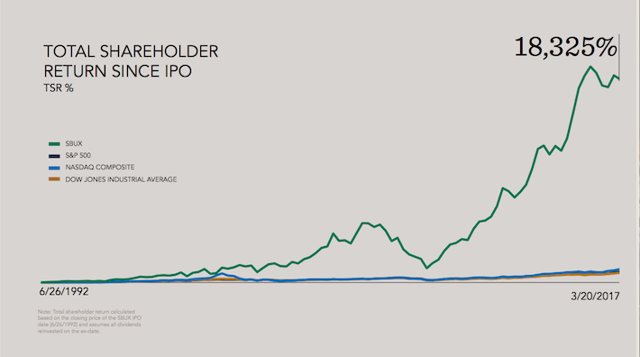
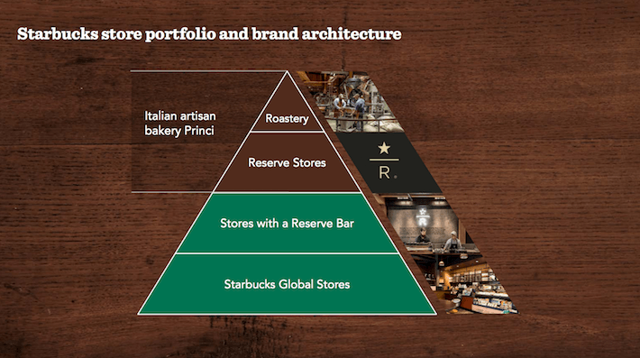
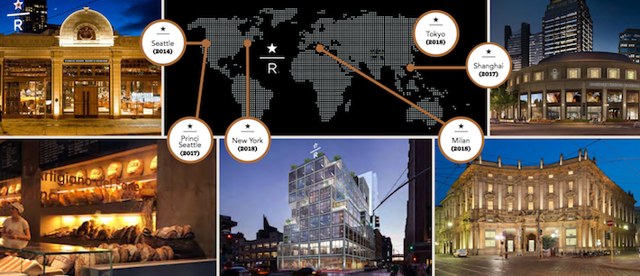
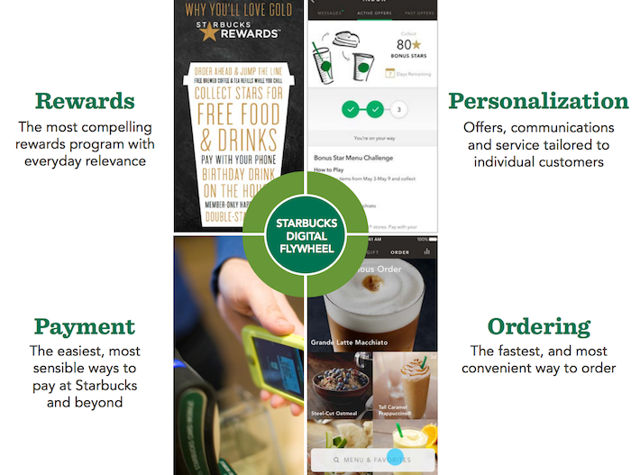
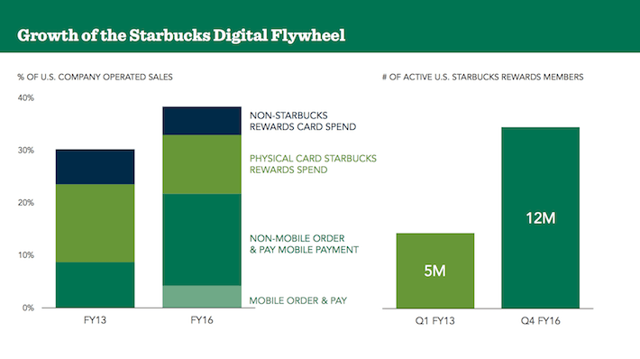

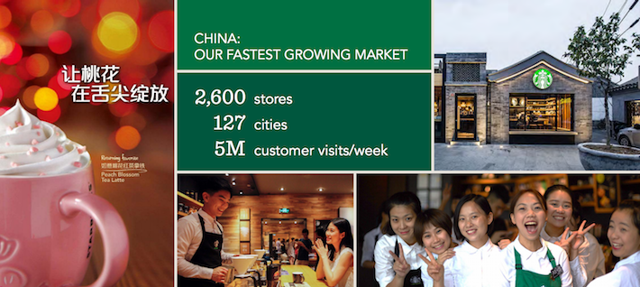
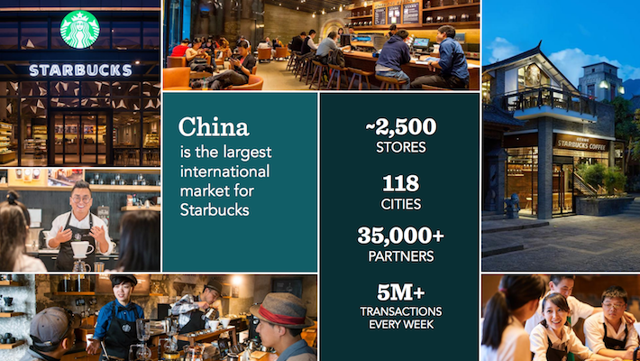
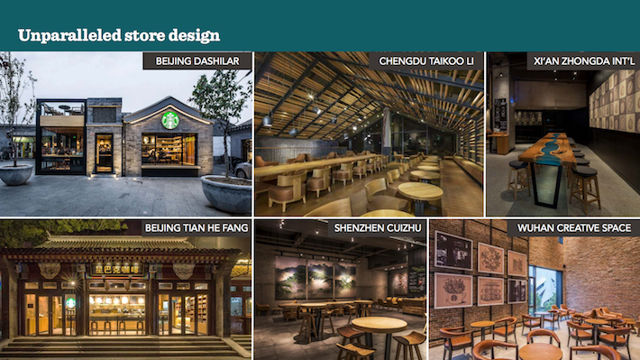
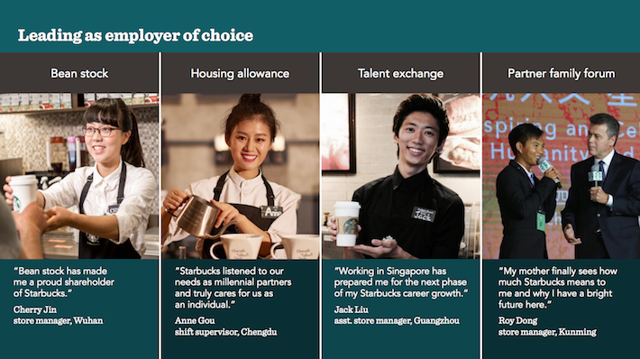
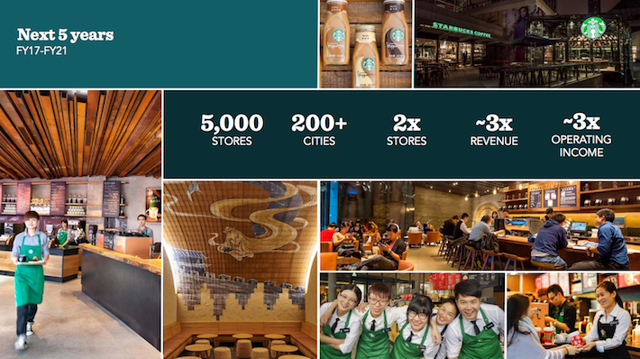
No comments:
Post a Comment